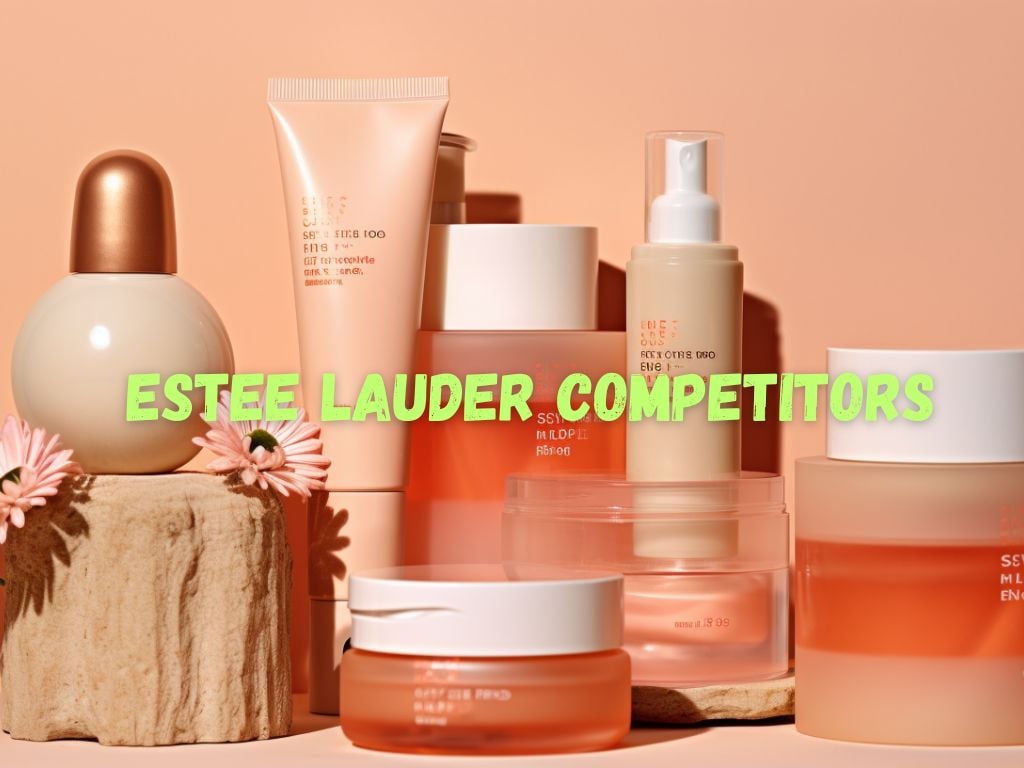In the vast and competitive beauty industry, Estee Lauder holds a prominent position. However, understanding the company’s competitors is essential for consumers and industry professionals alike.
Through this article, we will delve into the top Estee Lauder competitors, exploring their strategies, product ranges, market shares, and more.
By gaining insights into these brands, you can make informed decisions about your beauty purchases.
Estee Lauder Competitors: Complete List
Unilever
Unilever is a global powerhouse known for its extensive portfolio of beauty and personal care brands.
With products ranging from skincare to haircare, Unilever has established a strong presence in the market. Brands like Dove, Pond’s, and Vaseline offer consumers a wide range of affordable and quality beauty products.
Colgate-Palmolive
Although primarily known for oral care products, Colgate-Palmolive also competes in the beauty industry.
The company’s personal care brands, including Palmolive, Softsoap, and Irish Spring, have gained a loyal following. Their bath and body products cater to various needs and are widely available at affordable prices.

Johnson & Johnson
Johnson & Johnson, a trusted name in healthcare, has ventured into the beauty industry with popular brands like Neutrogena and Aveeno.
By emphasizing scientific research and innovation, Johnson & Johnson offers skincare, haircare, and baby care products that resonate with consumers.
Procter & Gamble
Procter & Gamble is a behemoth in the consumer goods industry, providing a wide range of products including beauty and personal care items.
With brands such as Olay, Head & Shoulders, Pantene, and Gillette, Procter & Gamble showcases its commitment to quality and consistent innovation.
Coty
Coty is a global beauty company that owns and licenses a diverse range of brands, including CoverGirl, Rimmel London, and Sally Hansen.
With a focus on cosmetics and fragrances, Coty offers trendy and affordable options for consumers seeking the latest beauty trends.
L’Oreal
L’Oreal, one of the world’s largest beauty companies, competes directly with Estee Lauder in various product categories.
With brands like L’Oreal Paris, Maybelline, and Lancome, L’Oreal excels in product innovation and global marketing efforts, appealing to a wide range of consumers.
Beiersdorf
Beiersdorf, the parent company of NIVEA, is a leading skincare competitor in the beauty industry.
Known for its dedication to high-quality formulas and reliable products, Beiersdorf has successfully positioned NIVEA as an affordable and trusted skincare brand worldwide.
CHANEL
CHANEL, a renowned luxury brand, extends its influence into the beauty industry with a range of high-end cosmetics, fragrances, and skincare products.
With a focus on elegance and sophistication, CHANEL appeals to consumers seeking luxury beauty experiences.
Shiseido
Shiseido, a Japanese beauty giant, offers a comprehensive range of skincare, makeup, and fragrance products.
Known for its fusion of Eastern traditions and Western advancements, Shiseido reflects its commitment to innovation, quality, and cultural diversity.

Estee Lauder, with its iconic portfolio of brands like Estee Lauder, Clinique, and MAC, has a significant market share in the beauty industry.
However, competitors such as L’Oreal, with its extensive brand presence and global reach, pose a formidable challenge.
Understanding the fluctuating market shares and trends is crucial in assessing the dynamics of the beauty industry.
Product Range and Differentiation
Estee Lauder’s product range spans across skincare, makeup, fragrances, and more. Its competitors offer similar breadth, each with their own unique selling points.
Unilever, for example, excels in affordable personal care products, while CHANEL maintains a luxury focus.
Understanding these differentiators enables consumers to align their preferences with the brand that best meets their needs.
Brand Strategies
Brand strategies play a vital role in the success of beauty companies. Estee Lauder’s positioning revolves around sophistication, elegance, and quality.
In contrast, brands like Procter & Gamble leverage their vast portfolio to cater to a range of consumer preferences.
By examining the strategies of competitors, we can gain insights into their target markets and identify key marketing tactics.
Innovation and Research
Continuous innovation is crucial in the beauty industry, and Estee Lauder has consistently delivered breakthrough products.
However, competitors like Johnson & Johnson have focused heavily on research and scientific advancements to develop effective beauty solutions.
Analyzing the innovation-driven strategies of competitors provides a comprehensive understanding of the industry’s advances.
Distribution Channels and Retail Presence
Estee Lauder’s distribution network extends to various retail channels, including department stores, online platforms, and standalone stores.
Competitors like Coty foster partnerships with retailers to ensure widespread availability of their products, while L’Oreal has successfully embraced e-commerce.
Examining the distribution approaches of Estee Lauder’s competitors helps consumers identify where they can access their preferred brands.
Frequently Asked Questions
What are the main competitors of Estee Lauder in the beauty industry?
Estee Lauder faces strong competition from brands like L’Oréal, Procter & Gamble, Coty Inc., and Shiseido.
Estee Lauder holds a significant market share in the beauty industry, but it closely competes with brands like L’Oréal and Procter & Gamble, which also have substantial market shares.
What are the unique selling points of Estee Lauder’s competitors?
Estee Lauder’s competitors have their own unique selling points. L’Oréal is known for its extensive range of brands and global reach. Procter & Gamble offers a wide variety of beauty and personal care products, targeting diverse consumer preferences. Coty Inc. specializes in affordable cosmetics and fragrances. Shiseido emphasizes innovation, cultural diversity, and skincare expertise.

How does Estee Lauder differentiate itself from its competitors?
Estee Lauder differentiates itself through a combination of factors. It focuses on luxury and prestige beauty products, maintains a strong brand identity, and emphasizes innovation and research. Estee Lauder also strategically partners with influencers and celebrities to enhance its market position.
Which competitors are leading in innovation and research in the beauty industry?
L’Oréal and Estee Lauder are considered leaders in innovation and research in the beauty industry. Both companies invest heavily in scientific research, product development, and technological advancements.
What are the distribution channels utilized by Estee Lauder’s competitors?
Estee Lauder’s competitors utilize various distribution channels, including retail stores, department stores, beauty specialty stores, online platforms, and their own direct-to-consumer channels. The specific distribution channels vary for each competitor.
How does Estee Lauder’s pricing strategy compare to its competitors?
Estee Lauder’s products are positioned in the premium price range, reflecting their luxury image and product quality. While their prices may be higher compared to some competitors, they are generally comparable to other luxury beauty brands in the market.
What are the key retail partnerships of Estee Lauder’s competitors?
The key retail partnerships of Estee Lauder’s competitors may include collaborations with department stores, beauty specialty stores, and online retailers. These partnerships vary for each competitor and are often established to expand the availability of their products and enhance brand visibility.
Conclusion
In the highly competitive beauty industry, Estee Lauder faces several prominent rivals. Understanding Estee Lauder’s top competitors provides valuable insights into their strategies, product ranges, market shares, and more.
By analyzing these brands and their unique offerings, consumers can make informed decisions about their beauty purchases.
Remember to consider brand differentiation, market positioning, innovation, and distribution strategies when choosing the beauty products that cater to your specific needs and preferences.


 Tags:
Tags:










